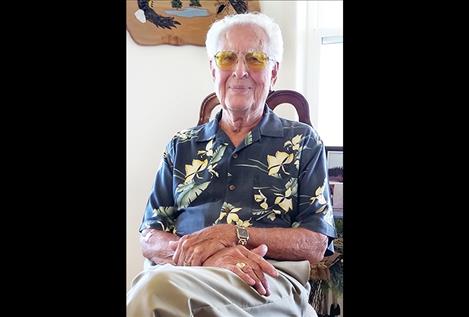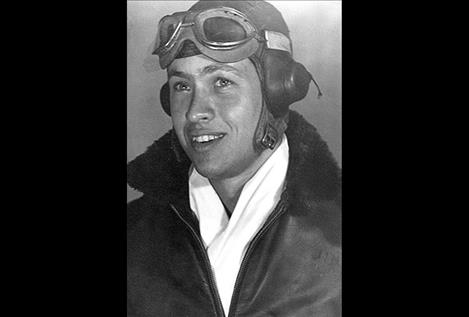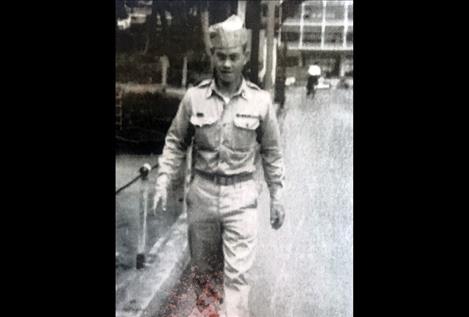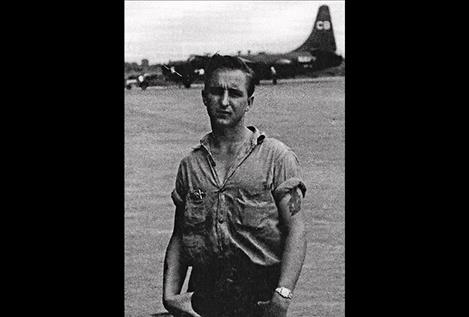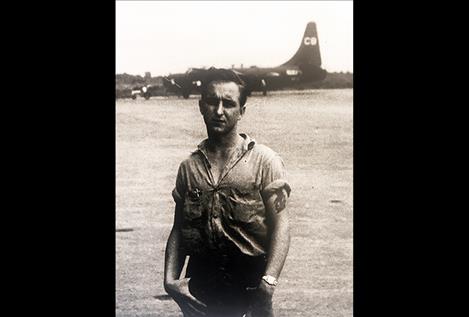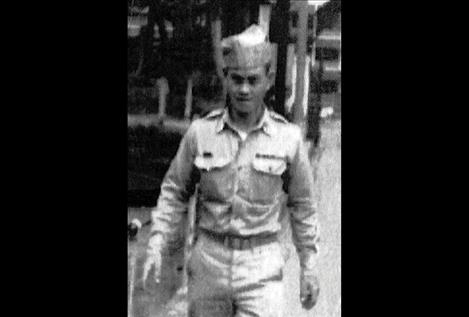Veteran Spotlight
William James Sivelle February 27, 1926 WWII: Aviation Machinist Mate – 3rd Class U.S. Navy - USS Detroit Aviation Unit
Hey savvy news reader! Thanks for choosing local.
You are now reading
1 of 3 free articles.
In 1944, Jim Sivelle, a 17-year-old California high school senior, was sure he was going to be drafted. Because he had wanted to fly since he was eight years old, and to be sure he wouldn’t be drafted, he went to see an Army Air Corps recruiter to enlist. The recruiter said, “OK, but you have to go right now or find another branch of the service.” Well, Jim wanted to graduate, so he found a Navy recruiter who would delay his enlistment until July, and Jim graduated in June.
Jim spent his boot camp time in San Diego Company 453, California until November and was then sent to Alameda Naval Air Station, California on Jan. 10, 1945. There he worked on planes and learned to handle 30-caliber machine guns. Not only was he an airplane mechanic, but flying as the “rear seat” in a 2-seater, he had to be able to handle the guns and fly the plane if the pilot became incapacitated. One time Jim loaded a 3-inch “gun” but it misfired. Inspection discovered that Jim’s ID bracelet had fallen into the gun and jammed it. Oops.
Jim was fortunate to get a short leave back home for Christmas before going overseas. From Alameda, Jim shipped out to Pearl Harbor in Hawaii, then to Ulithi in the Caroline Islands, then to Truk Lagoon in the Central Pacific and finally to Iwo Jima. His ship arrived on Feb. 5 and was soon part of the Battle of Iwo Jima. His next stop was Okinawa on April 1 just in time for the Battle of Okinawa that started on April Fool’s Day.
Jim’s ship, USS Detroit, used a steam generated catapult to launch the planes. The ship would sail in a curve so the wake would create a smooth area called a “slick” that the planes would land on when they returned. Jim’s plane, the Kingfisher, would move on its pontoons to the side of the ship where it was loaded back on deck with a crane.
The ship was part of the “Ghost Fleet,” one time sailing 93 days without seeing land. Its main job was to find supply ships from wherever (Australia, New Zealand, the U.S.) and bring them to whichever fleet needed them. They served the 3rd, 5th, and 7th Fleets.
Jim’s ship was headed to Japan under “Operation Olympic” which was gathering all ships possible for an October 1945 offensive when, on Aug. 7 the first atomic bomb was dropped, followed by the second bomb on Aug. 14. Two weeks later the USS Detroit was the first ship to sail into Tokyo Bay. Jim says it was the first ship to get out of Pearl Harbor, Hawaii after the Dec. 7, 1941 attack and it was symbolic that it should be the first ship into the Japanese harbor. In the pictures of the Japanese surrender on Sept. 2, 1945, the USS Detroit is seen near the USS Missouri where the documents were signed. Jim described the ceremony in a letter to his parents that was also printed in the LA Times.
While the ship was in Tokyo Bay, Jim and the others in the crew took turns at shore patrol. One time he and some buddies acquired a Japanese “picket boat” (a small boat the Japanese had used to warn of incoming B-29 bombers.) After they fixed the magnetos and got a battery from a Japanese submarine, they used it to explore the canals in the area. They ended up selling it to some Marines for $75.
Jim returned to the States to San Pedro near Los Angeles in November 1945. The ship was going to go through the Panama Canal and then would be decommissioned, so Jim saw an opportunity for some extra leave time. “Sir, I’d like some leave time to get married,” he said. It was granted providing he would be back on the ship Dec. 5 in Norfolk, Virginia. The fact that he was not getting married was a minor detail.
After the crew disbanded, Jim ended up with the Marine Corps in El Centro, California for a month. He worked there as Border Patrol enforcing a curfew that required U.S. GIs to be back across the border from Mexico by midnight. One time he got orders to collect all the 45’s (guns) and sack them with the bullets removed and sacked separately. Come to find out, one of the border patrol agents shot himself in the leg, so guns were taken away. Jim says he was shot at more there than when he was in combat, so when he insisted he needed his gun, they were probably glad to get rid of him.
From there Jim went back to San Pedro and was discharged June 28, 1946.
Jim didn’t consider staying in the military – at that point he wanted out so he could go to work. He had sent half of his meager military pay home to his mother and didn’t have much on hand. Would he do it all over again? “You Betcha! I wouldn’t take a million dollars for the experience, no siree!”
If Jim were President he would have registration for selective service for those aged 18-35. They might not actually be a called up – only if needed. Jim worked for a Congressman for more than 30 years recommending young people for appointments to the military academies. Academy graduates get a good education and are in demand for good jobs. His advice to anyone considering the military is to, “Get in there! If you don’t want to go to an academy, go into the regular military. You learn discipline. There are many benefits and you become part of a special ‘family.’”
Thank you for your service, Jim.















